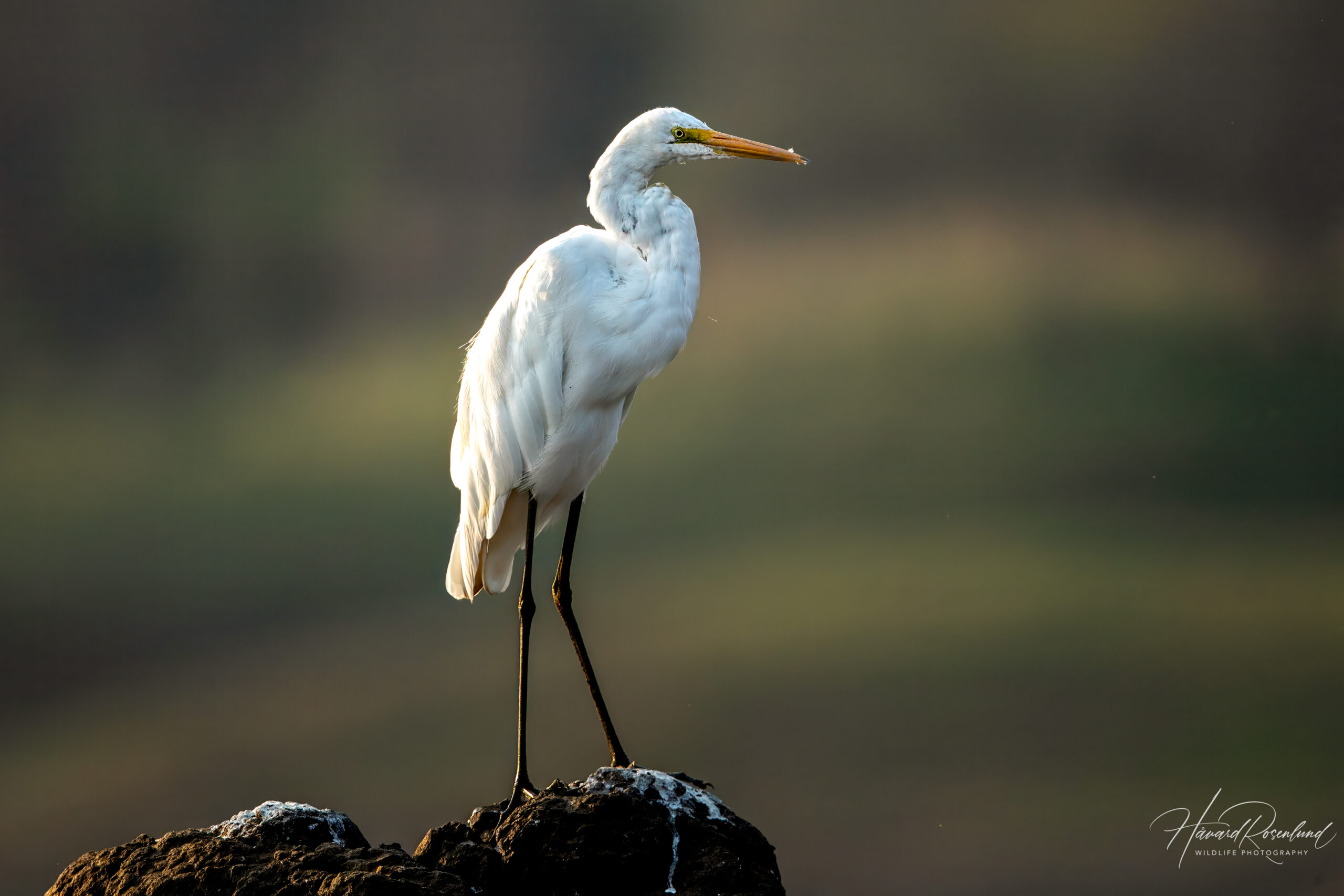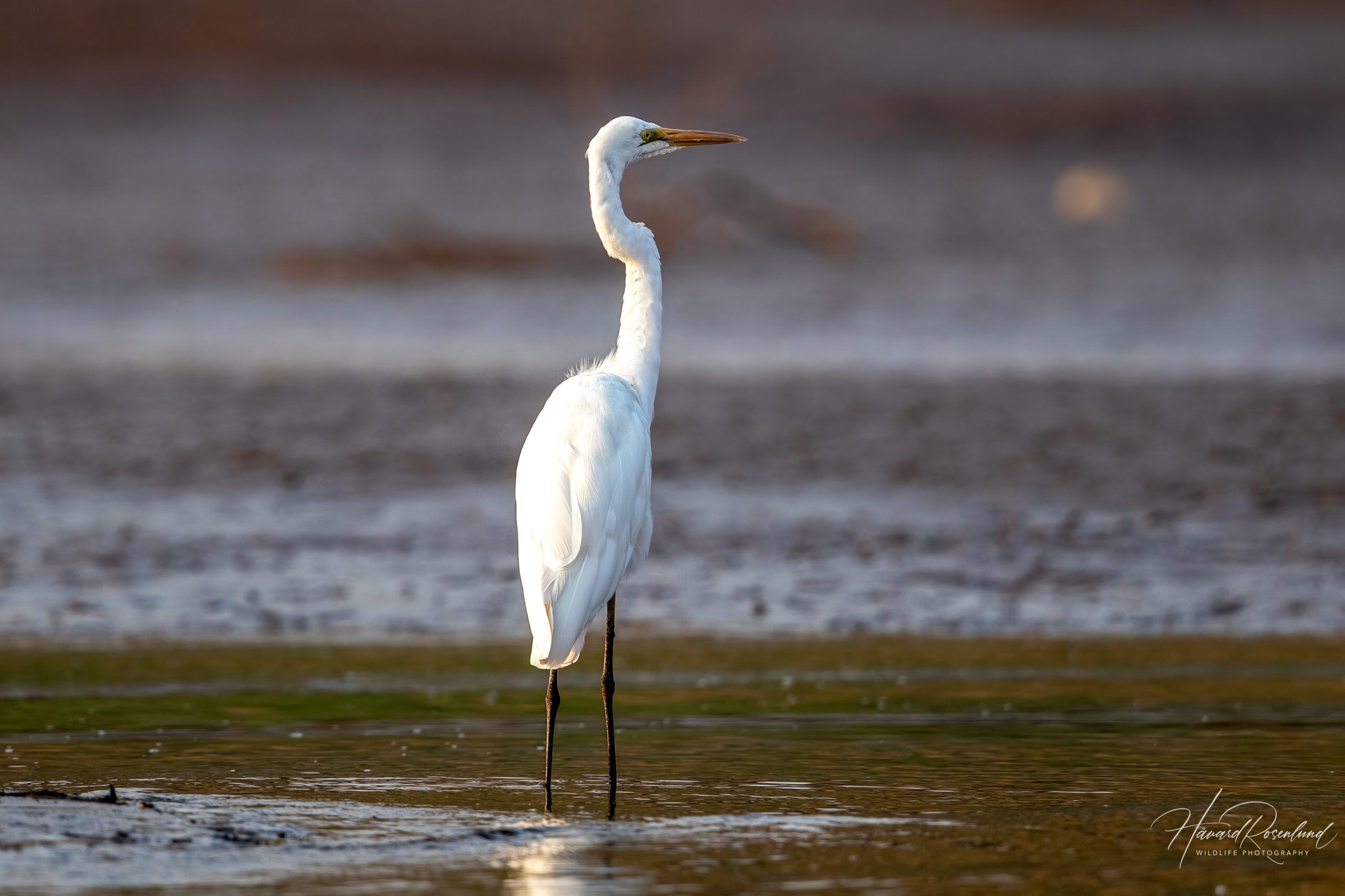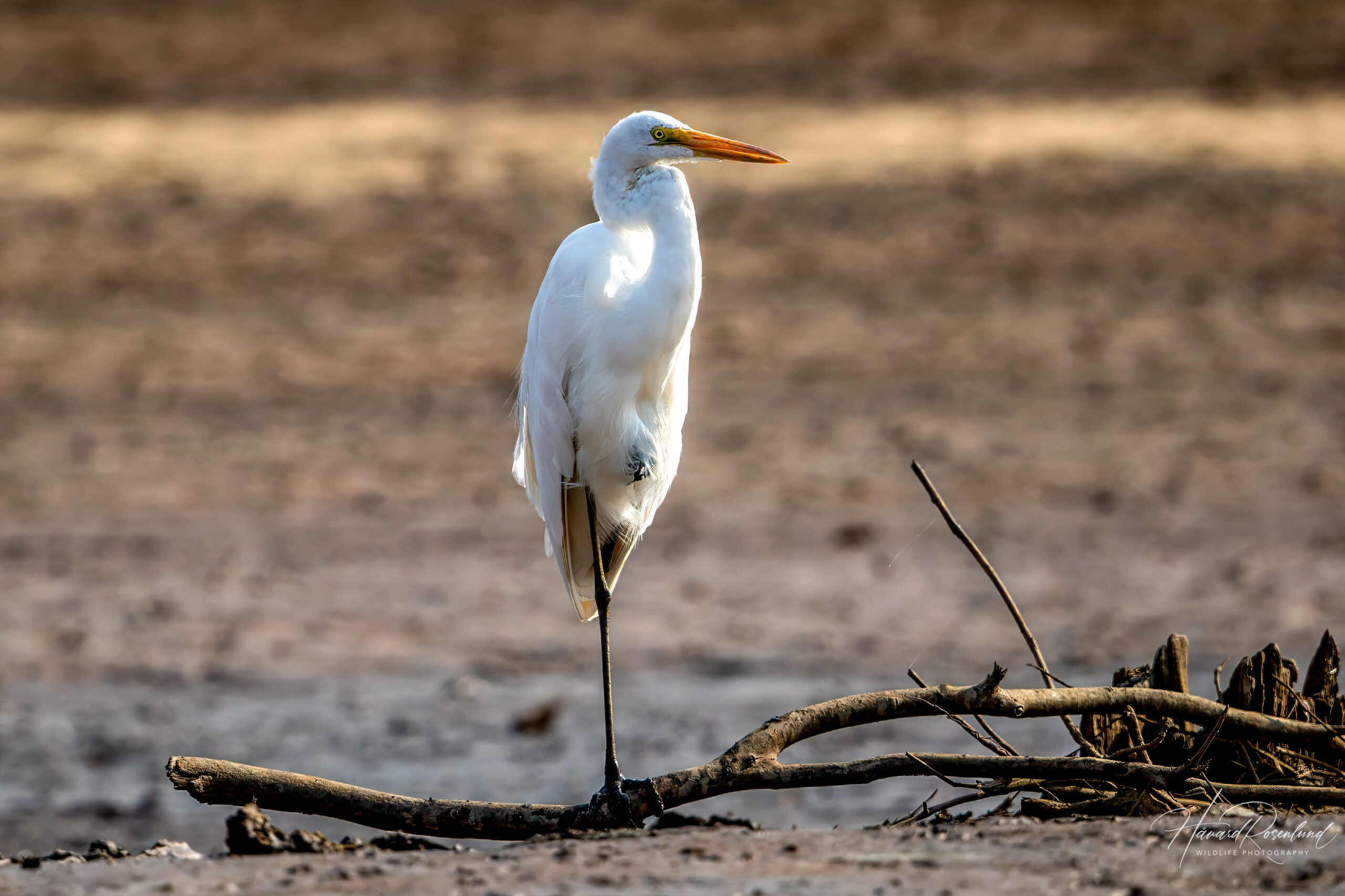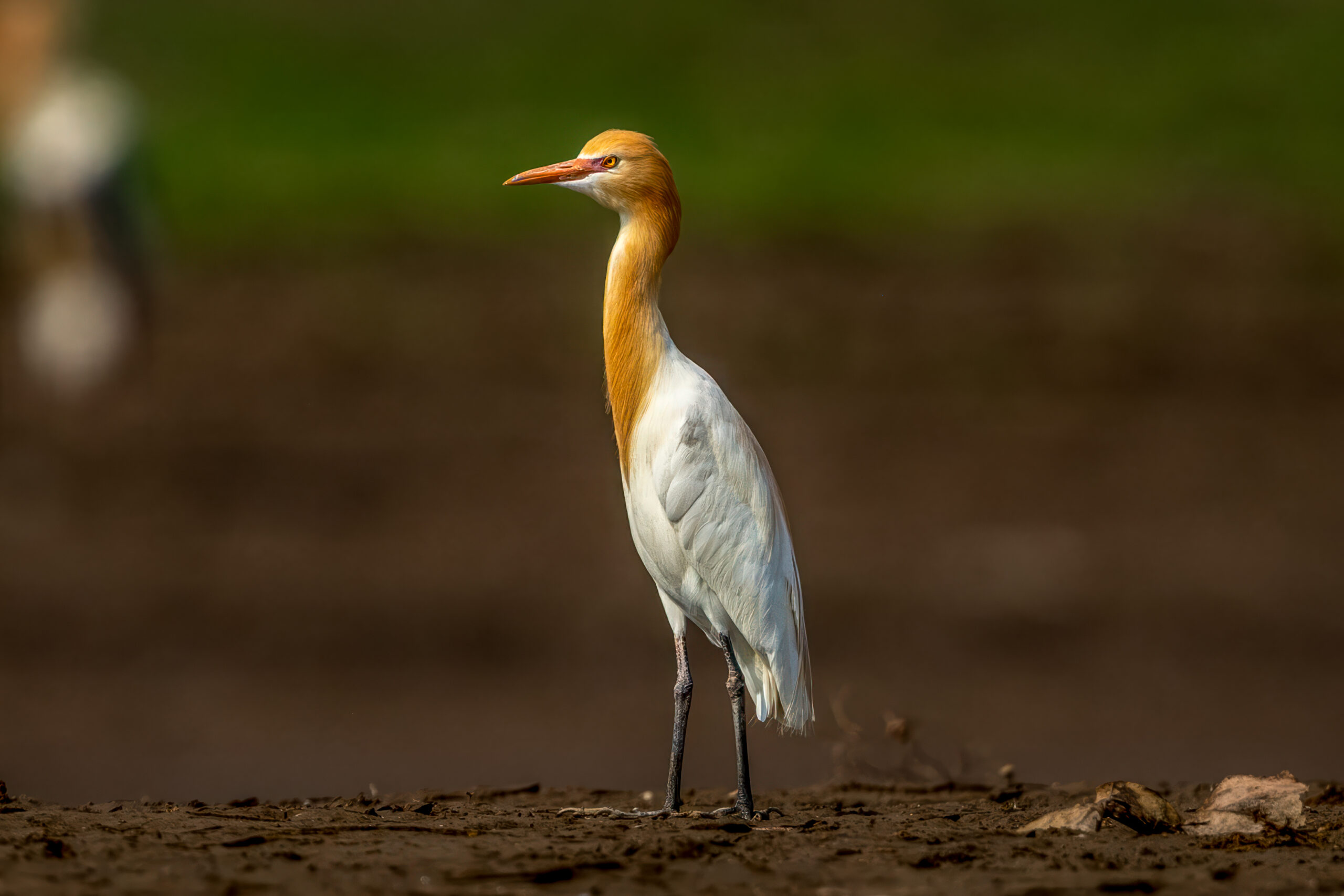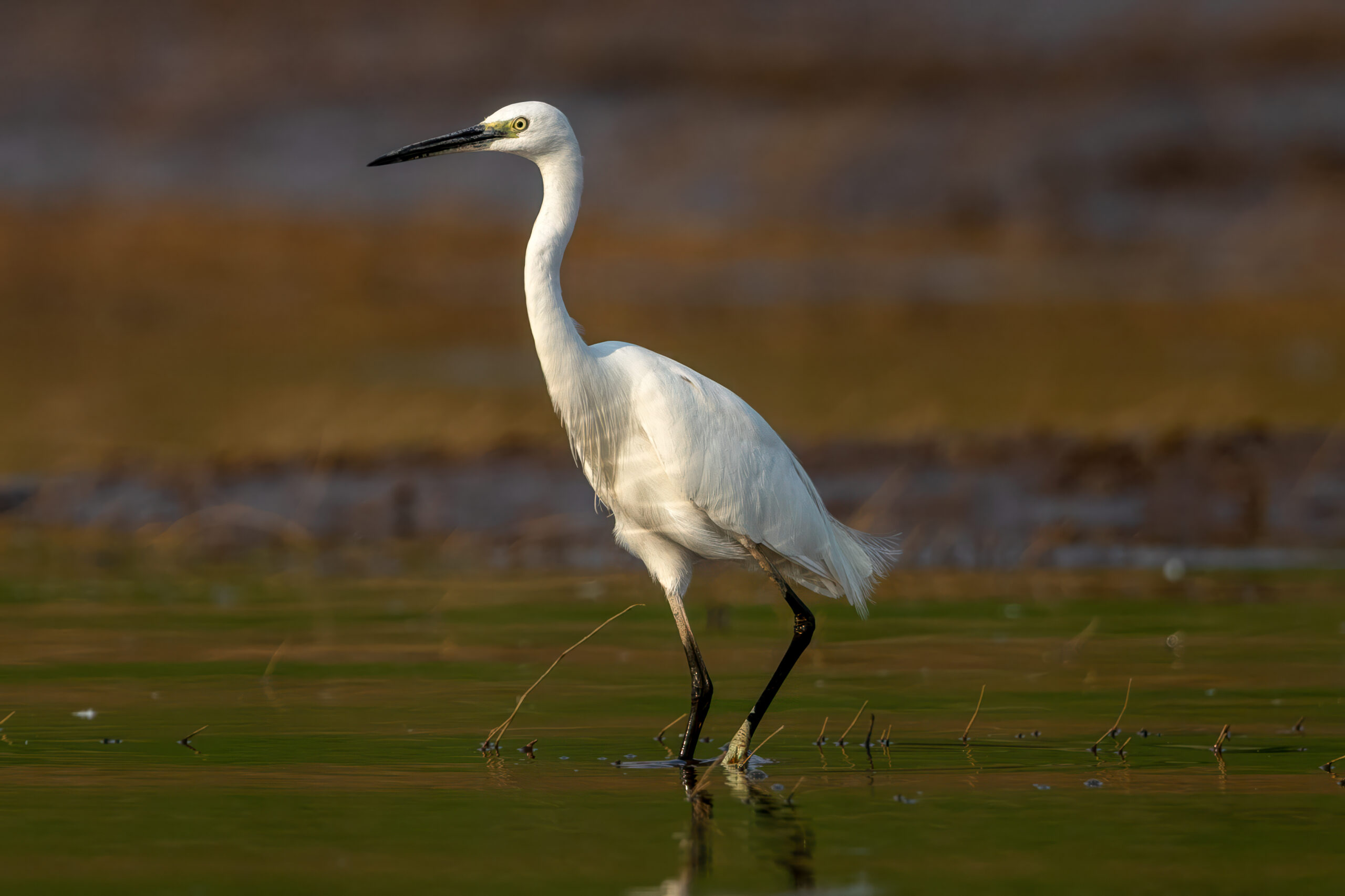Description
The great egret (Ardea alba) is a large, majestic bird with an impressive wingspan, easily identifiable by its long neck, large body, and equally long legs. It is found across a wide range, including much of North and South America, southern Europe, Africa, Asia, and even in parts of Australia. It measures about 94-104 cm (37-41 in) in length, with a wingspan of approximately 140-170 cm (55-67 in). Adult great egrets have a yellow bill and an all-white plumage. During breeding season, they develop green skin around their eyes, as well as long delicate plumes on their back, which were once coveted for use in women’s hats. Their bill can also turn black when breeding.
Similar species
The great egret is larger than all other white herons and egrets, but it can still be confused with similar species. It is most similar to the medium egret (Ardea intermedia) in Asia, the yellow-billed egret (Ardea brachyrhyncha) in Africa and the plumed egret (Ardea plumifera) in Oceania. These egrets are smaller, has a shorter neck, and a shorter bill. One telltale difference, is that the gape of the great egret extends clearly past the eye, whereas the gape of the these egrets extends no further than the center of the eye. When the bill turns black in breeding season, it can also be confused with the much smaller little egret (Egretta garzetta) in Europe, Africa, Asia, and Australia, and snowy egret (Egretta thula) in the Americas, if size comparisons are not possible. Both the little egret and snowy egret have yellow feet (which turn more red in breeding season), and lack the bright green lores of a breeding great egret.
Diet & habitat
Great egrets inhabit both freshwater and saltwater environments, including ponds, marshes, rivers, lakes, and coastal areas. They are adept at adapting to various wetlands. These birds are skilled hunters, feeding in shallow water on fish, frogs, small mammals, and occasionally small reptiles and insects. Their hunting technique involves standing still and watching for prey, then striking with their long necks and bills. The great egret’s diet varies depending on its habitat, with a higher proportion of aquatic prey in wetland areas.
Nesting
The breeding season of the great egret varies depending on the location, but generally occurs in spring. It breeds in colonies, often with other heron species. During this time, they display elaborate courtship behaviors, including bill dueling and plume displays. Nesting sites are typically in trees or shrubs near water. Both parents participate in building the nest, which is made of sticks and lined with softer vegetation. Females lay 1 to 6 eggs, which are then incubated by both parents for about 23 to 26 days. The young fledge in about 6 to 7 weeks but remain dependent on their parents for a short period thereafter. They have been known to live up to 22 years in the wild.
Status
The great egret populations are stable, and it is widespread across its range. This was not always the case, as its populations were decimated in the late 19th and early 20th centuries due to the demand for its plumes. Conservation efforts, particularly the Migratory Bird Treaty Act of 1918, have significantly helped in its recovery. It is now an abundant species. However, habitat destruction and pollution continue to be threats in some areas. It is listed as least concern on the IUCN Red List.





